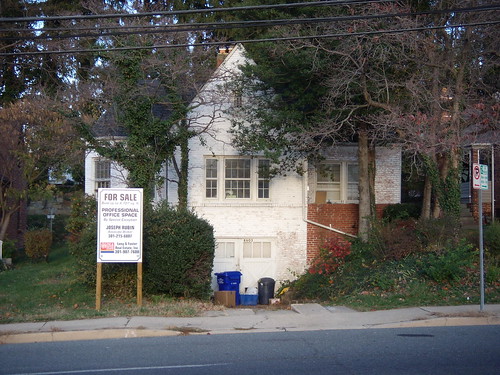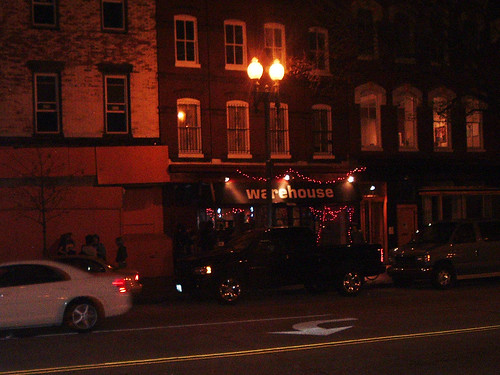
For the past year and a half, I have been keeping watch of an old house on the edge of Downtown Silver Spring, Md., my hometown. Until little over a year ago, the tiny bungalow was called The Death Star, and it served as home and stage alike for a group of local punks. There is a considerable punk-and-group-house scene in Silver Spring and its crunchier neighbor, Takoma Park, both on the edge of Washington, D.C.
When racial tensions and urban sprawl left the cores of Washington and Silver Spring empty and decaying, it was taken over by emigrating Latinos; by low-income African-Americans finally able to leave the city proper; and by artists and punks. These groups invested in Silver Spring and made do with what they were left by wealthier families driven away by perceptions of crime and traffic.
Four years ago, the core of Downtown Silver Spring was redeveloped into a mixed-use complex with high-end stores and a twenty-screen movie theatre. A vacant, block-long lot - currently carpeted in synthetic turf until a permanent plaza and civic building is installed - is all that sat between The Death Star and Downtown. And, unsurprisingly, its landlord saw the profits to be made and filed plans to turn the house into a medical office building. When the housing market took a nosedive, the proposal was shelved and a "FOR SALE" sign appeared outside but, by then, the Death Star's occupants had been evicted and moved several blocks away to a similar house in South Silver Spring, an industrial neighborhood that's also redeveloping.
My family left a spacious apartment in Downtown just months before Discovery Communications relocated there, a move many attribute to starting the revitalization. When the new shopping district opened my senior year of high school, I groused that I had to ask my friends for a ride to such an exciting place I could have walked to just a few years earlier, when it wasn't so desirable. And after my first - and only - show at the Death Star shortly after, I grumbled that the ensuing gentrification would probably swallow up one of a dwindling number of independent, organic places in the community.

For groups - be it low-income households, immigrant business, or punk kids - that were once sitting pretty in cheap, undesirable locations, it stings to think you were merely a keeping the seat warm for people with deeper pockets. At the Warehouse, an experimental theatre/music venue outside of Washington, D.C.'s Chinatown, I attended a workshop called "Fighting Gentrification" during the Positive Youth Fest, a two-day festival for a local punk scene many assumed had been dead for twenty years.
Between sets of loud, political rock served up by local high-schoolers at the Posi Youth Fest (as it's called for short), we talked about creating places that are, if you will, revitalization-proof. Twelve years ago, the Warehouse opened near in the then-moribund neighborhood just seven miles and eight Metro stops away from Downtown Silver Spring. And as its Chinese-restaurant neighbors are slowly being replaced by Chipotles, it has succumbed to rising rents and will be closing soon.
In order to stay afloat, we concluded, the Warehouse must reach out to communities it once ignored - namely the District's substantial African-American population. It'll be a challenge for the venue's mostly-white and suburban clientele, who may not consider themselves gentrifiers but play the same roles, to win the trust of wary residents who've lived there for decades.
If they can, they might stop the cycle of redevelopment with, of all things, punk rock. A neighborhood divided will not stand, but communities of involved and interconnected stakeholders might stand the test of gentrification.

No comments:
Post a Comment